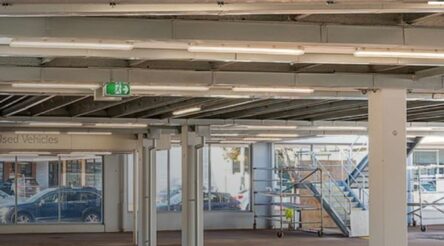New approach ‘far more cost-effective than any other green hydrogen’ method: RMIT researchers

Researchers from RMIT University have developed a method of creating hydrogen directly from seawater, which is the subject of a provisional patent and a new article in the journal Small.
According to a statement from the university on Tuesday, lab-scale tests have shown the process creates no carbon dioxide and no chlorine, the latter of which is currently “the biggest hurdle” in using seawater to create hydrogen.
“Our method to produce hydrogen straight from seawater is simple, scaleable and far more cost-effective than any green hydrogen approach currently in the market,” said Dr Nasir Mahmood, a Vice-Chancellor’s Senior Research Fellow at the university and the study’s lead researcher.
“With further development, we hope this could advance the establishment of a thriving green hydrogen industry in Australia.”
Green hydrogen is currently not economically appealing, the release notes, and represents only about a per cent of all hydrogen currently synthesised. The previous federal government set a $2 per kilogram goal for clean hydrogen.
According to Hysata, a University of Wollongong spin-out business launched in June 2021 and developing electrolysers, it is on track to enable green hydrogen “well below” $2 per kilogram when it reaches the manufacturing stage.
The RMIT study names “a unique catalyst composed of porous sheets of nitrogen-doped NiMo3P” and was focussed on production of highly efficient, stable catalysts that can be manufactured cost-effectively.
“These new catalysts take very little energy to run and could be used at room temperature,” added PhD candidate Suraj Loomba.
“While other experimental catalysts have been developed for seawater splitting, they are complex and hard to scale.
“Our approach focused on changing the internal chemistry of the catalysts through a simple method, which makes them relatively easy to produce at large-scale so they can be readily synthesised at industrial scales.”
The RMIT team is currently “working with industry partners to develop aspects of this technology” the university said, and their next stage is development of a prototype electrolyser combining “a series of catalysts to produce large quantities of hydrogen.”
The news follows an announcement at the beginning of the month by University of Adelaide of a paper in Nature Energy, showing a method to use seawater as a feedstock – without the need for pre-treatment such as “reverse osmosis desolation, purification, or alkalisation” – for creation of hydrogen with an inexpensive catalyst.
Picture: Suraj Loomba, Dr Nasir Mahmood and Dr Muhammad Waqas Khan (credit RMIT)
Further reading
RESEARCHERS TURN SEAWATER INTO HYDROGEN WITH HIGH EFFICIENCY
Topics Manufacturing News Technology
@aumanufacturing Sections
Analysis and Commentary Awards Defence Manufacturing News Podcast Technology Videos










